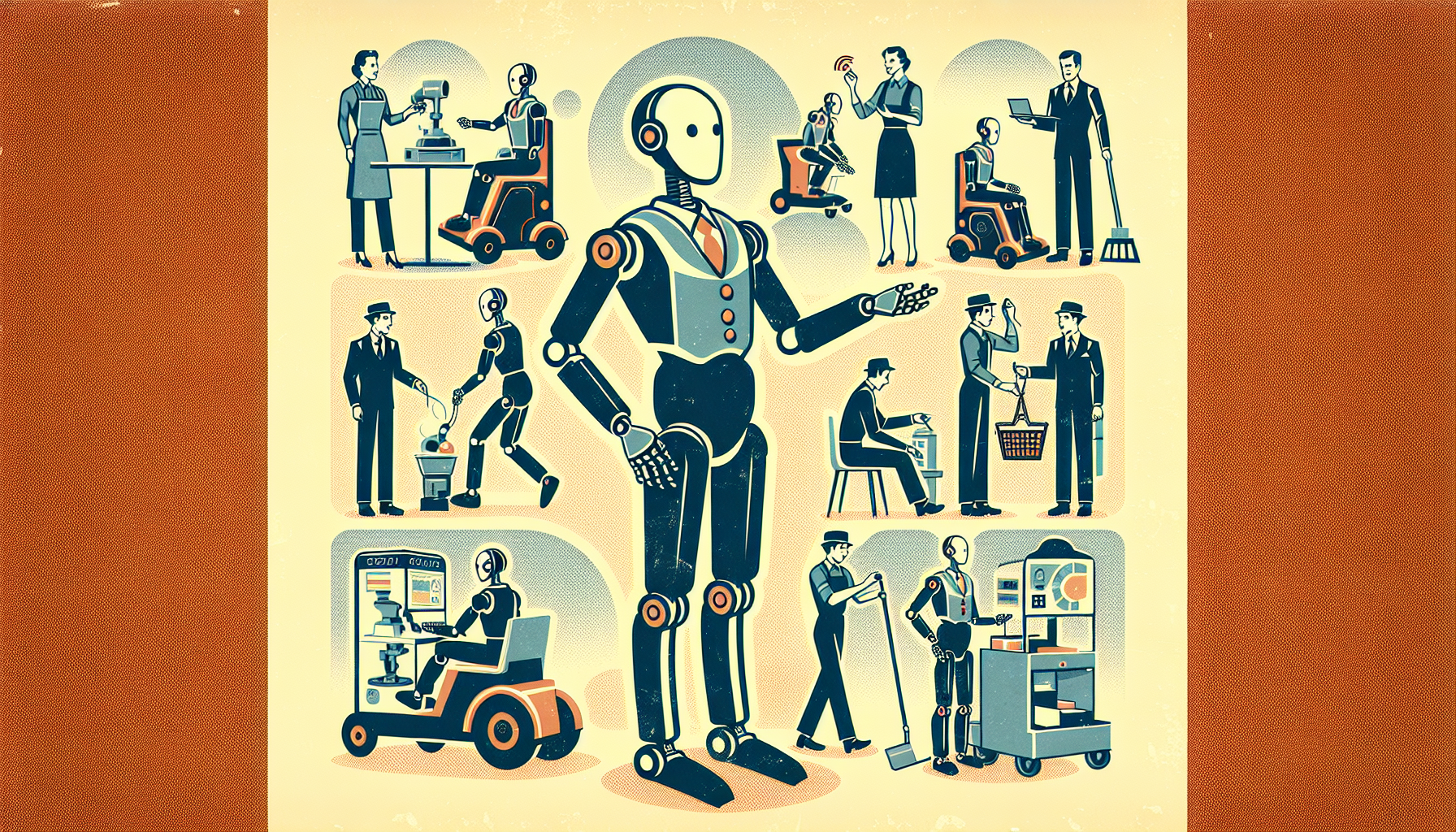AI-powered humanoid robots stand on the threshold of a new age of productivity. These robots, shaped like people and guided by artificial intelligence, are set to change the way we work, making tasks simpler, safer, and more efficient for all.
The Rise of Humanoid Robots
Only a short time ago, humanoid robots were limited to laboratories and research projects. Now, rapid progress has brought these remarkable machines closer to daily life. By 2025, they are expected to move from experimental uses to real jobs, serving alongside people in workplaces that need extra help or face dangerous conditions.
Tesla leads these efforts, with plans to build 10,000 of its Optimus humanoid robots in 2025 and aiming for 500,000 each year by 2027. This ambitious production shows just how serious and large-scale the movement has become. Others, like Agility Robotics and Dobot, are putting robots such as Digit and Atom into logistics, warehouses, and even homes, where they fetch items, sort packages, and do household chores.
How Humanoid Robots Change Work
Humanoid robots are more than machines—they combine flexible movement with learning minds. Because of this, they can:
- Take on repeated, dangerous, or physically tough tasks, reducing risks for people and keeping workplaces safer.
- Work around the clock, never tiring or needing breaks, which can raise output levels to new heights.
- Move and act like people, making it easier for them to adapt to human spaces and existing work routines.
This flexibility means robots can assist or replace people in manufacturing, delivery, services, and even at home. Their help is especially valuable where there are not enough workers, or where tasks are too hard or risky for people. For countries with aging populations and not enough hands, these robots offer a much-needed boost. In service sectors, which have struggled with finding workers and improving efficiency, robots could be game changers.
Market Growth and Real Challenges
The future of humanoid robots looks bright. Experts at UBS predict the market could grow from $30–50 billion by 2035 to as much as $1.7 trillion by 2050. This growth includes spending on manufacturing, new software, smart components, and services that support robots in real-life roles.
Yet, bringing robots into everyday life is not without obstacles:
- Their artificial brains need to get even smarter and more capable to handle complex environments on their own.
- Robots require vast amounts of data to learn and improve, which can be difficult to collect.
- Careful rules and laws are needed to keep robot use safe, fair, and ethical for everyone.
Some believe that the earliest impacts of these robots might be overestimated. But, over time, their true value will be revealed—just as the automobile and computers deeply transformed society and workplaces, so will humanoid robots.
A New Era for Work and Productivity
Humanoid robots, powered by advanced AI, are not simply tools—they are the partners of tomorrow’s workforce. As mass production ramps up, we stand at the start of a new industrial era. Here, humans and robots work together, each enhancing the strengths of the other.
This partnership promises to solve worker shortages, improve safety, and unlock unseen levels of productivity. From factories to hospitals, and from warehouses to homes, the presence of humanoid robots could reshape life and work, boosting economies and improving lives around the world.
The age where humans and intelligent machines join forces is near. In this unfolding story, humanoid robots are destined to become foundational to progress and growth for generations to come.

Leave a Reply